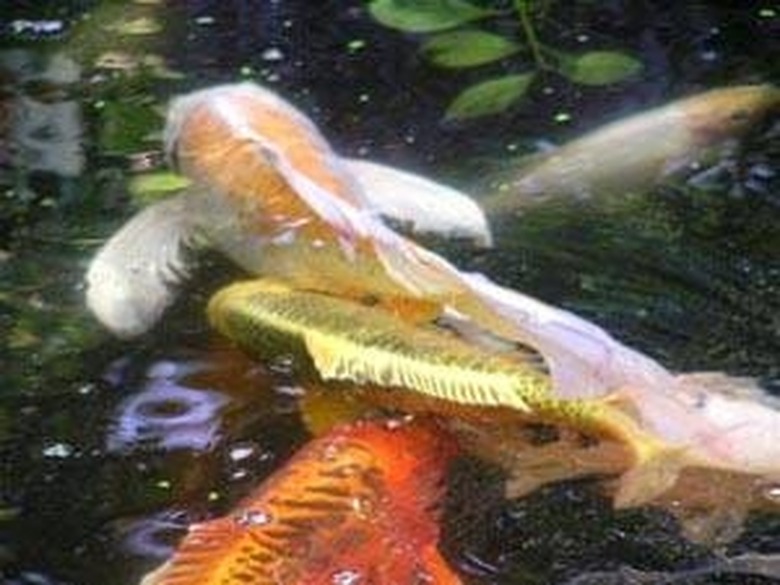How Do Koi Fish Give Birth?
Preparation for Spawning
Preparation for Spawning
Koi do not give birth to live young but instead deposit eggs in a method called spawning. Spawning means to produce eggs or young in large numbers. Koi are known as "egg scatterers" because they scatter their eggs all over when releasing them during spawning. After males reach 3 to 5 years old and females reach 4 to 6 years old, they are physically mature enough to begin breeding. They usually become interested in breeding during the spring season. About a month before they begin to spawn, they start eating at an optimum level. Males gain white spots on their pectoral fins and the covering of their gills, while females become swollen in their belly area as they begin to fill up with eggs. Though they breed in the spring when the weather may not be very warm yet, it is important for the temperature of the water to be between 65 and 75 degrees Fahrenheit for the eggs to stand the best chance of developing and hatching normally. As the time draws near, males chase females around the pond area. The females suck on plants, rocks and the sides of the pond to clean space for the eggs.
Spawning
Spawning
Koi are triggered by the stages of the moon, and begin to spawn during the full moon phase. They deposit their eggs around daybreak, with the female scattering them over pond walls, the floor and plants.
Spawning goes best when there are two males to every pregnant female. The males will bump and nudge the female on her sides and stomach, which initiates the release of the eggs. After the eggs are free, males fertilize them by releasing sperm. If there is only one male to breed with the female, he will bump one side for a time and then go to the other side of her body to help her expel the rest of the eggs.
After Spawning
After Spawning
Koi eggs are sticky, individual spheres that cling to any surface they land on. Because adults can be cannibalistic toward their own young, it is best for either the eggs or the adults to be removed from the pond.
Healthy eggs are translucent and infertile ones tend to be a solid, milky color. Within a week of being laid, the eggs will begin to hatch. Because they cannot swim immediately, they will hide in plants or other secure areas to avoid becoming food for adults. The newly hatched fish or "fry" live on the yolk sack that is attached to them at birth. Once they become larger, they too might start eating other fry that are smaller or weaker than them.
